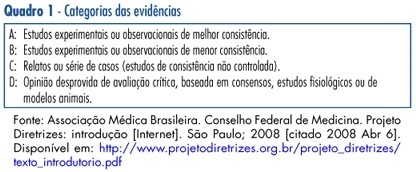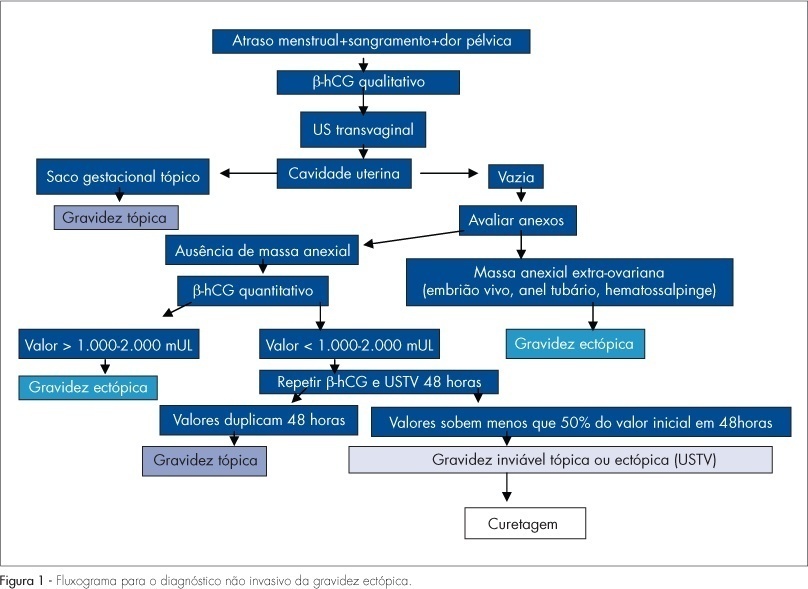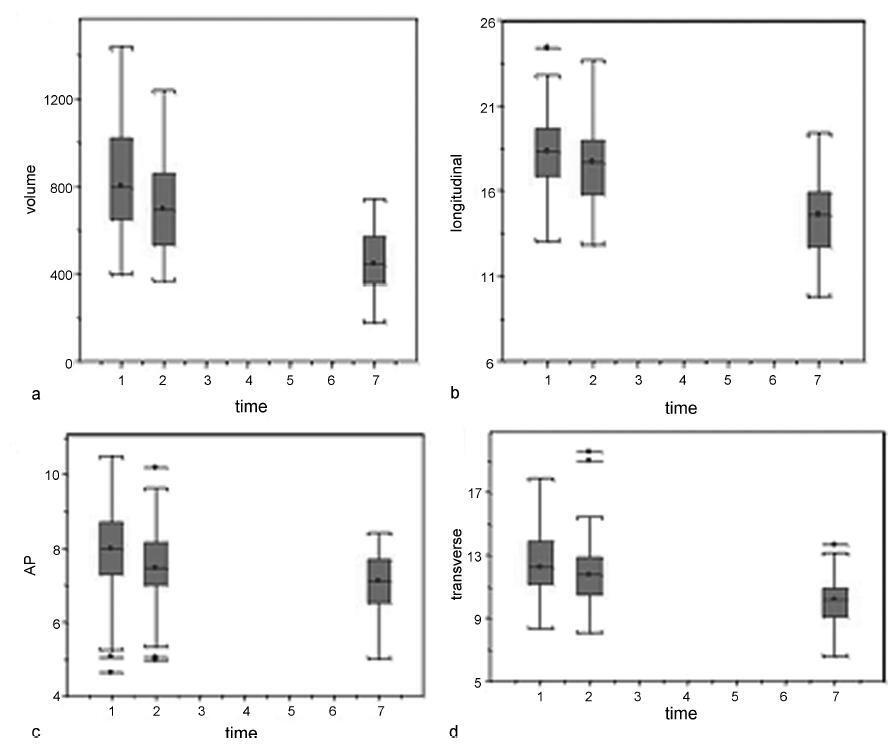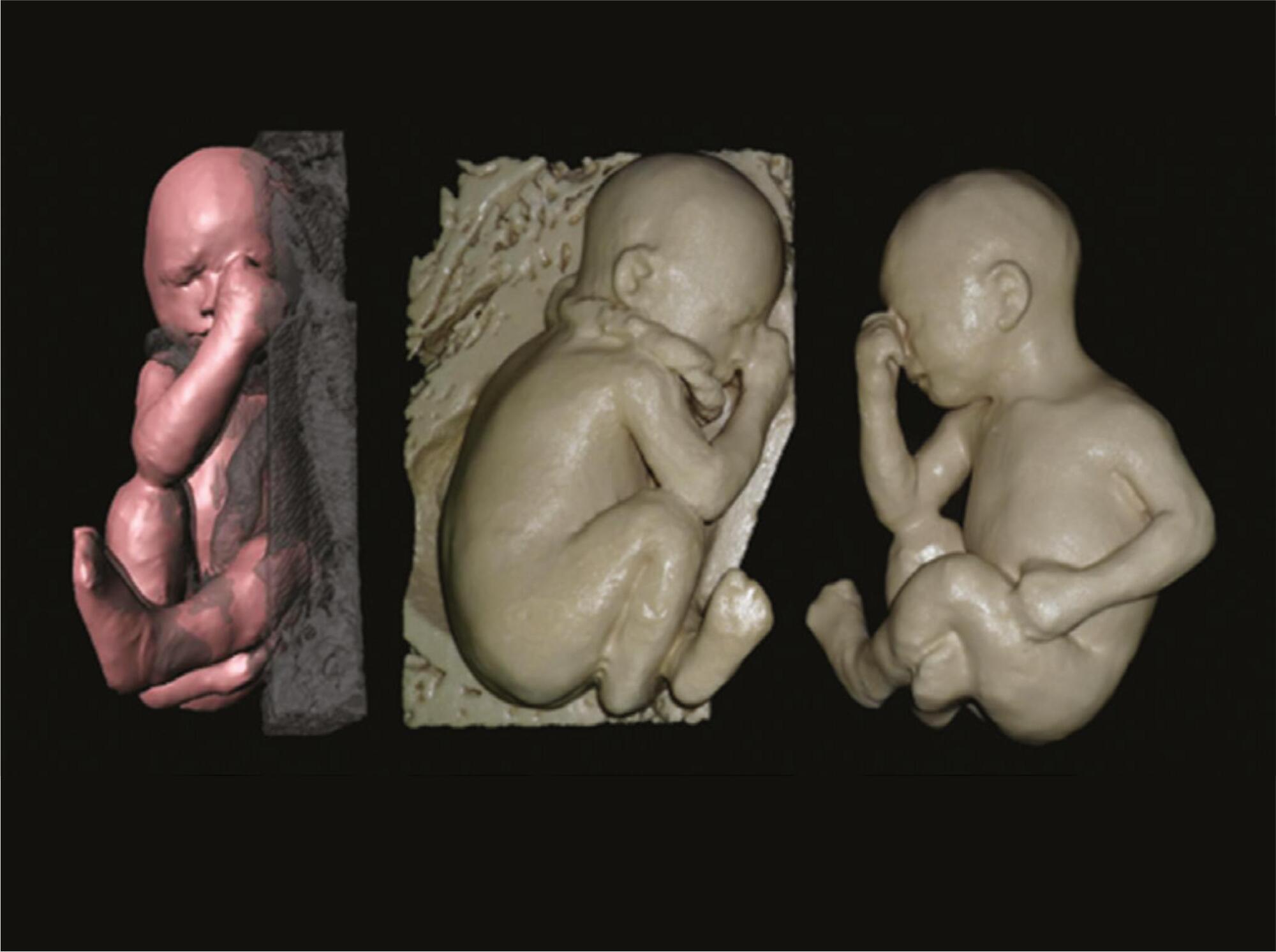Summary
Revista Brasileira de Ginecologia e Obstetrícia. 2021;43(2):148-149
Summary
Revista Brasileira de Ginecologia e Obstetrícia. 2009;31(3):148-155
DOI 10.1590/S0100-72032009000300008
Good prenatal care is essential to guarantee maternal and perinatal health. Nowadays, with the constant progress on the diagnostic methods and changes in diseases panorama, like increased frequency of diabetes and sexually transmitted diseases, several diagnostic procedures have been studied. These challenges difficult the selection of prenatal exams by the clinicians, in order to improve maternal and perinatal outcome. This review aimed to evaluate the main prenatal routine exams, according to the best current scientific evidences.

Summary
Revista Brasileira de Ginecologia e Obstetrícia. 2008;30(3):149-159
DOI 10.1590/S0100-72032008000300008
It is advisable to do the non-invasive diagnosis of ectopic pregnancy precociously, before there is the tube rupture, combining for that the transvaginal ultrasonography with the dosage of the b-fraction of the chorionic gonadotrophin. A range of treatment options may be used. Either a surgical intervention or a clinical treatment may be taken into consideration. Laparotomy is indicated in cases of hemodynamic instability. Laparoscopy is the preferential route for the treatment of tube pregnancy. Salpingectomy should be performed in patients having the desired number of children, while salpingostomy should be indicated in patients willing to have more children, when the b-hCG titers are under 5,000 mUI/mL and the surgical conditions are favorable. The use of methotrexate (MTX) is a consecrated clinical procedure and should be indicated as the first option of treatment. The main criteria for MTX indication are hemodynamic stability, b-hCG <5,000 mUI/mL, anexial mass <3,5 cm, and no alive embryo. It is preferable a single intramuscular dose of 50 mg/m², because it is easier, more practical and with less side effects. Protocol with multiple doses should be restricted for the cases with atypical localization (interstitial, cervical, caesarean section scar and ovarian) with values of b-hCG >5,000 mUI/mL and no alive embryo. Indication for local treatment with an injection of MTX (1 mg/kg) guided by transvaginal ultrasonography should occur in cases of alive embryos, but with an atypical localization. An expectant conduct should be indicated in cases of decrease in the b-hCG titers within 48 hous before the treatment, and when the initial titers are under 1,500 mUI/mL. There are controversies between salpingectomy and salpingostomy, concerning the reproductive future. Till we reach an agreement in the literature, the advice to patients who are looking forward to a future gestation, is to choose either surgical or clinical conservative conducts.

Summary
Revista Brasileira de Ginecologia e Obstetrícia. 2017;39(4):149-154
Our aim was to describe the changes observed by ultrasonography in uterine dimensions during the early puerperium among women who experienced an uncomplicated puerperium. Additionally, the influence of parity, mode of delivery, breastfeeding and birth weight on uterine involution was evaluated.
Ninety-one patients underwent an ultrasound examination on days 1 (D1), 2 (D2) and 7 (D7) of the postpartum period. The longitudinal, anteroposterior and transverse uterine diameters were measured, and the uterine volume was calculated by the formula: longitudinal diameter (LD) X anteroposterior diameter (APD) X transverse diameter (TD) X 0.45. The thickness and length of the uterine cavity were also measured.
The uterine volume and the LD, APD and TD decreased by 44.8%, 20.9%, 11.8% and 20.0% respectively. The uterine cavity thickness was reduced by 23%, and the length of the cavity was reduced by 27.2% on D7. Uterine involution was correlated inversely with parity when the day of the postpartum period was not taken into account (p= 0.01). However, when the uterine involution was correlated to parity separately, with D1, D2 or D3, no correlations were found. A significant difference occurred at D2, when it was found that the uterus had a smaller volume following cesarean section compared with vaginal delivery (p= 0.04). The high birth weight and breastfeeding were significantly related to uterine involution (p ≤ 0.01 and p= 0.04).
The sonographic evaluation of the uterus in the early puerperium should consider birth weight, breastfeeding and parity, as well as the delivery route on D2, to identify abnormalities related to uterine involution.

Summary
Revista Brasileira de Ginecologia e Obstetrícia. 2015;37(4):149-151
DOI 10.1590/SO100-720320150005250

Summary
Revista Brasileira de Ginecologia e Obstetrícia. 2023;45(3):149-159
This article aims to review the literature regarding the use of technologies to promote mental health for pregnant women. We seek to: understand the strategies that pregnant women use for mental health care. Also, we investigate the existence of scientific evidence that validates such practices.
This study follows the PRISMA guidelines for systematic reviews. We analyze 27 studies published between 2012 and 2019. We include publications in Portuguese, English, and Spanish.
The results revealed several different possibilities to use technology, including the use of text messages and mobile applications on smartphones. Mobile applications are the most commonly used approaches (22.5%). Regarding the strategies used, cognitive-behavioral approaches, including mood checks, relaxation exercises, and psychoeducation comprised 44.12% of the content.
There is a need for further investigation and research and development efforts in this field to better understand the possibilities of intervention in mental health in the digital age.
Summary
Revista Brasileira de Ginecologia e Obstetrícia. 2005;27(3):149-154
DOI 10.1590/S0100-72032005000300009
PURPOSE: to analyze the efficacy, safety and real advantage of vesicoamniotic shunt catheter in the intrauterine treatment of obstructive uropathy. METHODS: a retrospective and descriptive study, in which the evolution of 35 fetuses with obstructive uropathy, submitted to vesicoamniotic shunt from 1990 to 2004 in a Fetal Medical Center was evaluated. All these fetuses fitted the selection criteria defined by a protocol of this service, and had the parents' consent for the procedure. The Pediatric Nephrology Sector of the Hospital das Clínicas of UFMG assessed all of them after delivery to confirm the prenatal diagnosis and outcome. The dead neonates were studied by the Pathological Anatomy Sector of UFMG. Descriptive analysis of the following parameters was performed: prenatal diagnosis of the uropathy, gestational age at shunt insertion, time of catheter utilization, post-surgery complications, perinatal mortality and neonatal survival. RESULTS: posterior urethral valve was the most common uropathy (62.8%). The mean gestational age at the vesicoamniotic shunt placement was 26.1weeks and the mean time of its presence was 46 days (1-119 days). There were four intrauterine fetal deaths and 17 in the neonatal period (60% perinatal mortality). The main cause of death was pulmonary hypoplasia. Olygohidramnios was present in 33/35 fetuses (94.3%) and it was reversed in 23 of them (70%); fourteen fetuses survived the neonatal period. At present, there are 4 children followed up by the Pediatric Sector of Nephrology of Hospital das Clínicas. Two of them have been treated with peritoneal dialysis, awaiting renal transplantation. The other two have normal renal function. Their age varies from 2 months to 4 years. CONCLUSION: the vesicoamniotic shunt may be a viable intrauterine treatment for severe obstructive uropathy, with 40% of survival rate of fetuses that might have progressed to death. However, the procedure's success was directly related to the adequate selection, and to the early intervention in the uterus, performed before 32 weeks of gestation in fetuses with bilateral obstruction, without any associated malformation and with still preserved renal function. Olygohidramnios reversion did not guarantee a good prognosis. It remains controversial if the vesicoamniotic shunt can really ensure long-term renal function.
Summary
Revista Brasileira de Ginecologia e Obstetrícia. 2003;25(3):149-154
DOI 10.1590/S0100-72032003000300002
PURPOSE: to describe the frequency of clinical and laboratorial findings in pregnant women with malaria. METHODS: a descriptive study was performed including 445 pregnant women with a positive diagnosis of malaria of the Maternity and women's Clinic Bárbara Heliodora (Rio Branco, Acre State), from January 1996 to December 2001. These cases were reviewed and the pregant women with malaria were selected. RESULTS: a total of 33,420 patients were hospitalized in that period. Of these, 445 pregnant women (1.4%) were included. Among these, the frequency of the infection with Plasmodium vivax was 52.8% (n=235), with P. falciparum, 43.8% (n=195), and 3.4% (n=15) with both plasmodia. The most frequent clinical and laboratorial alterations (p<0.05) were observed in the patients with P. falciparum: pale mucosa, jaundice hemoglobin and hematocrit decrease, hypoglycemia and increase in serum aminotransferase, urea, creatinine and in bilirubin levels. Only one patient (1/445), a pregnant woman infected with P. falciparum died. Abortions, premature birth and low birth weight were detected in 1.3, 1.1 and 1.1% of the cases, respectively. CONCLUSIONS: these findings reflect the repercussion of malaria during pregnancy, and justify the existence of qualified medical care in obstetric units for diagnosis and treatment of these cases, especially in the Amazon region.